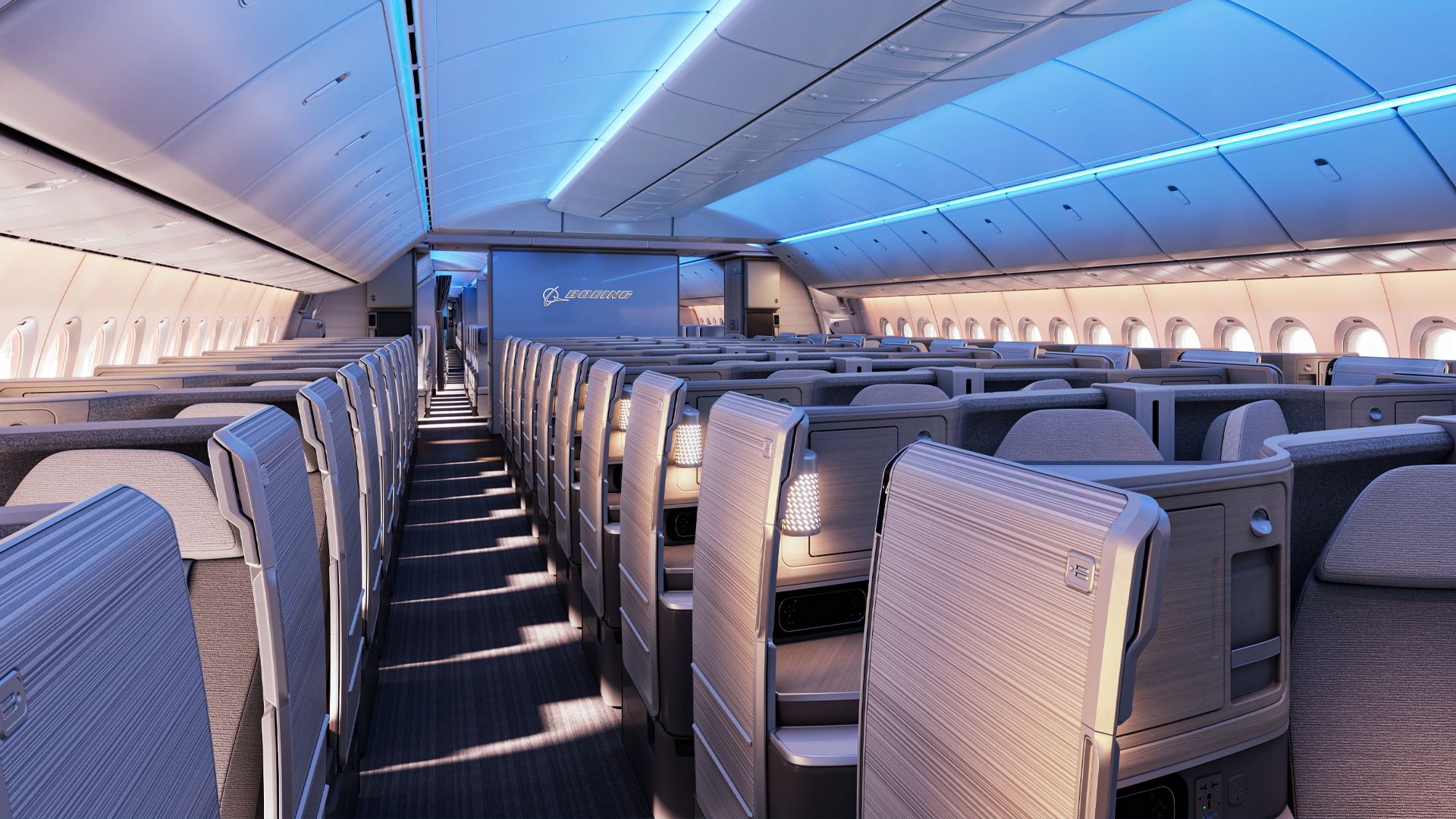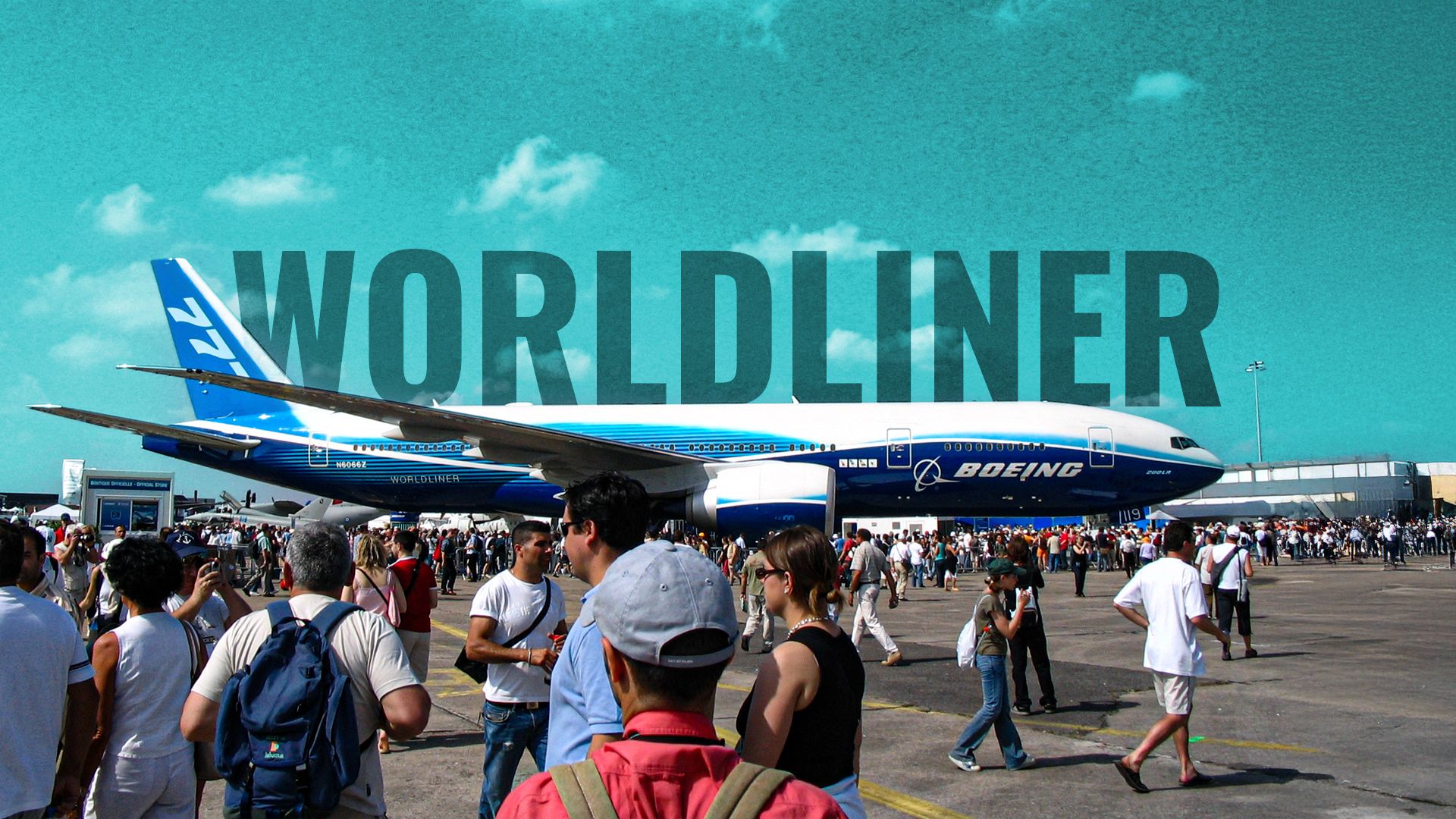The Boeing 777X is poised to redefine long-haul air travel with its anticipated entry into commercial service in 2027. This aircraft features several groundbreaking design elements, including the largest commercial aircraft engine ever built and unique folding wingtips. Enhancements extend beyond the exterior, promising passengers a significantly improved onboard experience.
Revolutionary Cabin Design
Boeing has once again collaborated with the design agency Teague, building on its innovative Sky Interior concept first introduced with the 787. The 777X will incorporate features aimed at enhancing passenger comfort and overall experience. A notable aspect is the cabin’s LED lighting system, which allows airlines to adjust color and intensity to create different atmospheres throughout the flight. For example, warm tones can be utilized during meal service, while gentle sunrise hues help passengers acclimate before landing. These adjustments not only enhance the cabin ambiance but may also assist in reducing jet lag on extended routes.
The Sky Interior also boasts sculpted sidewalls and larger pivoting overhead lockers designed to accommodate more carry-on bags while enhancing headroom. When not in use, these lockers seamlessly blend into the ceiling, promoting a more spacious environment. Furthermore, the redesigned windows allow for increased natural light, contributing to a more pleasant cabin atmosphere. Together with quieter air systems and improved materials, the Sky Interior aims to deliver a smoother journey.
Advanced Fuselage and Modular Features
The fuselage of the 777X measures 19 feet 7 inches (5.97 meters) in width, surpassing previous variants like the 777-300ER by 4 inches (10 cm). This increase is achieved through advanced materials that permit thinner cabin walls and concave interior surfaces. The added width enhances the sense of space and supports a 3-4-3 seating configuration with a width of 18 inches, exceeding current industry standards.
Another innovative aspect of the 777X is its modular framework. This design enables airlines to customize their cabins more flexibly than ever before. According to Teague, the aircraft features “two baseline architectural layouts” along with customizable lighting and premium treatments. This modularity allows airlines to adapt cabin configurations swiftly in response to market demands, facilitating adjustments between business and economy class or upgrades without extensive overhauls.
The 777X is part of Boeing’s next-generation twin-engine aircraft portfolio, promising greater efficiency, range, and capacity without sacrificing reliability. Its advanced General Electric GE9X engines, the most powerful commercial engines ever built, work in conjunction with new composite wings featuring folding wingtips to achieve up to 10% fuel savings compared to earlier models.
One of the standout features of the Boeing 777X is its innovative folding wingtips. While the wingspan extends to an impressive 235 feet (71.63 meters) during flight for optimal aerodynamic efficiency, the outer 11 feet (3.35 meters) of each wing can fold upward upon landing. This reduces the total wingspan to 212 feet (64.62 meters), allowing the aircraft to utilize standard airport gates without requiring significant infrastructure modifications.
The wing folding mechanism is designed with multiple safety layers, ensuring that the wingtips cannot fold or unfold during flight, with sensors monitoring their position throughout taxiing and takeoff. This feature exemplifies Boeing’s commitment to efficiency, combining aerodynamic performance with the practical need for compatibility with existing airport facilities.
Delayed Launch and Airline Interest
Despite its advanced features, the Boeing 777X program has faced significant delays, pushing back its launch by more than seven years. Originally slated for delivery in 2020, the aircraft has encountered numerous challenges including certification hurdles and the effects of the COVID-19 pandemic.
Increased scrutiny from regulators followed the tragic crashes of the 737 MAX in 2018 and 2019, prompting the US Federal Aviation Administration to impose stringent testing requirements for the 777X. Adjustments to flight control software and structural components discovered during test flights further extended the timeline.
The pandemic posed additional setbacks, disrupting production and workforce availability. Airlines have also delayed deliveries due to changing travel patterns and economic pressures. Currently, the first Boeing 777X is expected to be delivered to its launch customer, Lufthansa, in 2027.
Interest in the Boeing 777X remains strong, with over 500 orders placed by airlines globally. Emirates is set to become the largest operator, with a total of 205 aircraft on order, including 35 777-8s and 170 777-9s. Following Emirates, Qatar Airways and Korean Air are among the top customers.
The continued interest in the Boeing 777X indicates a strong belief in its potential to reshape the future of long-haul air travel, reinforcing Boeing’s legacy of innovation in the aviation industry.







